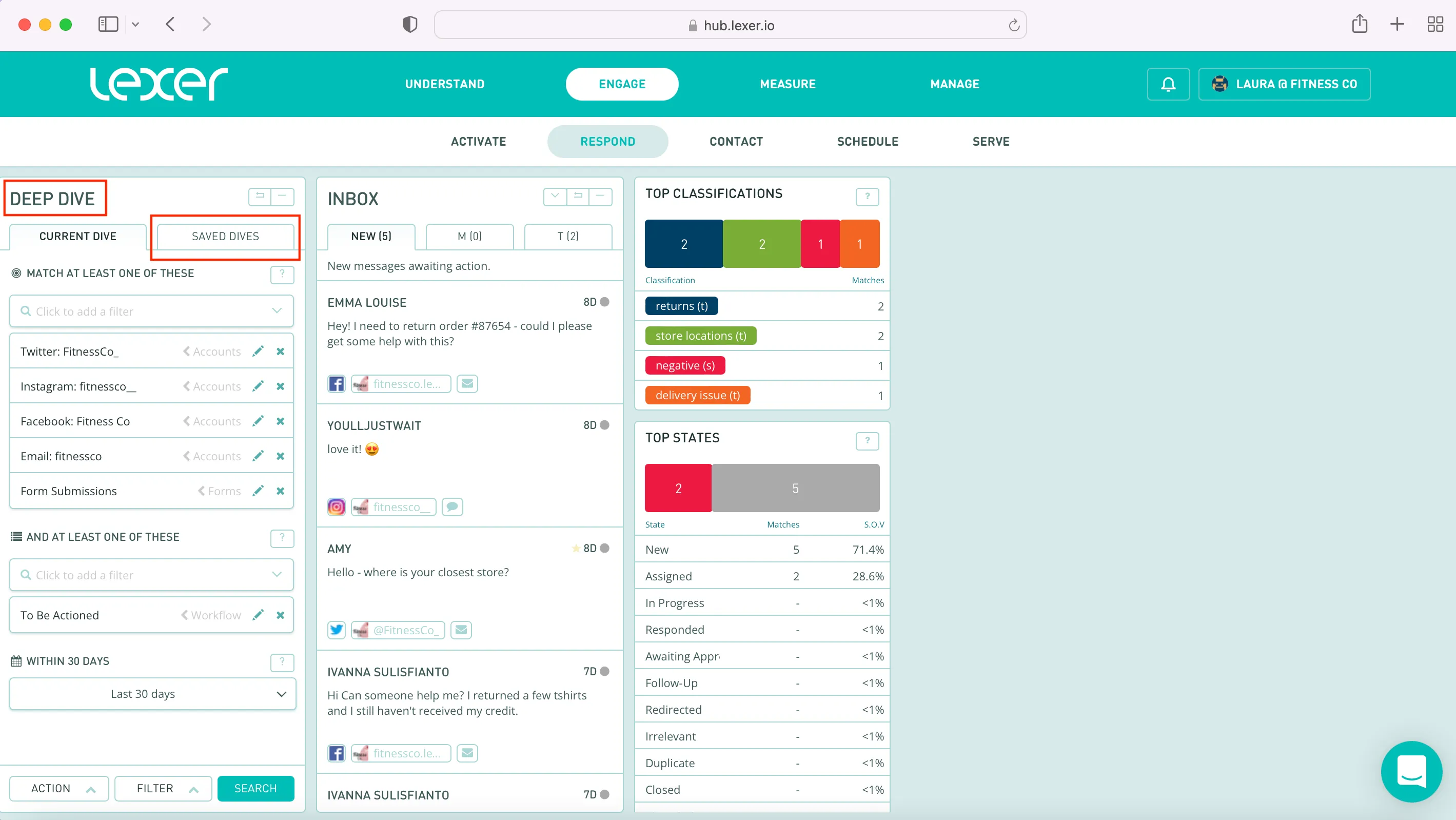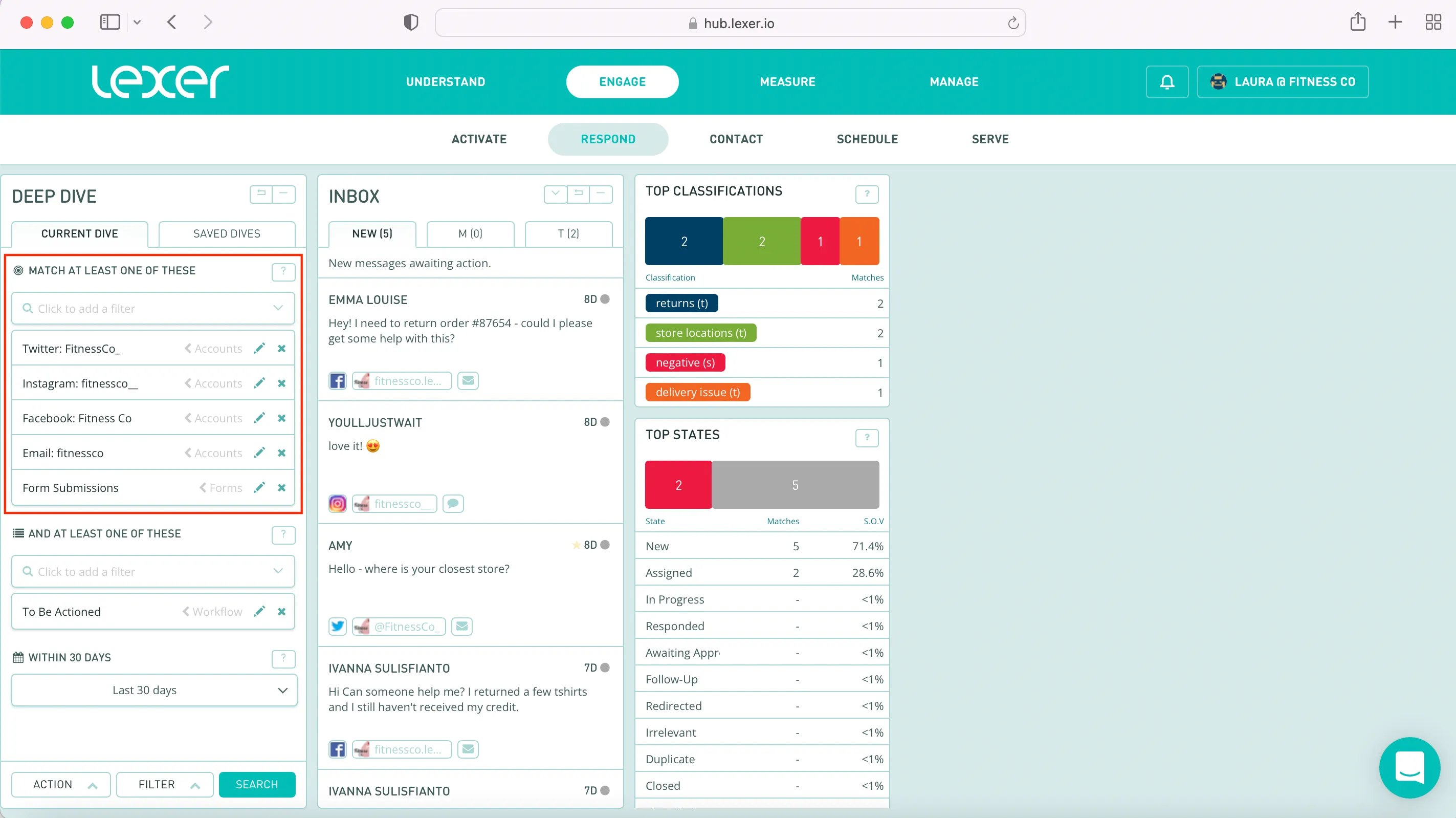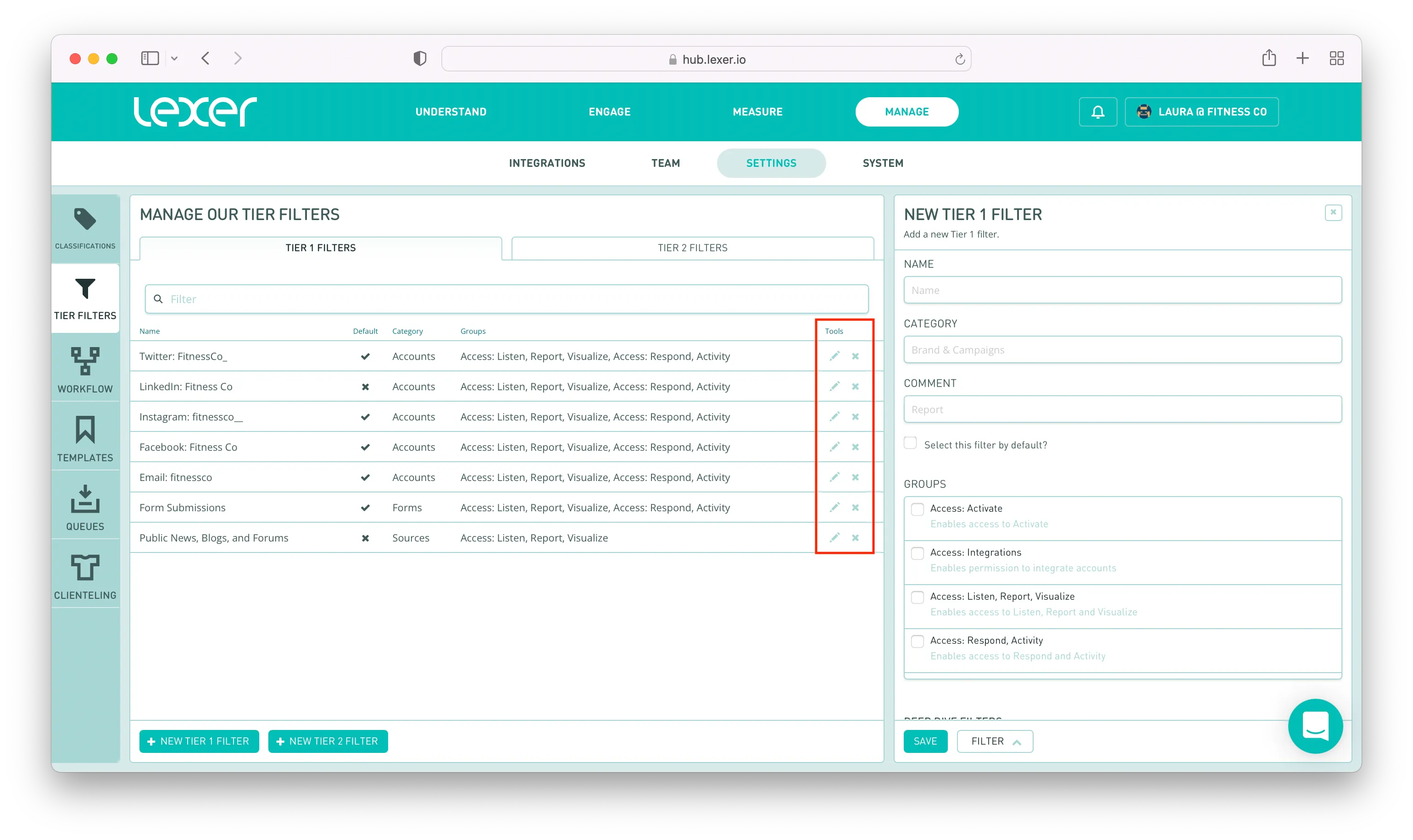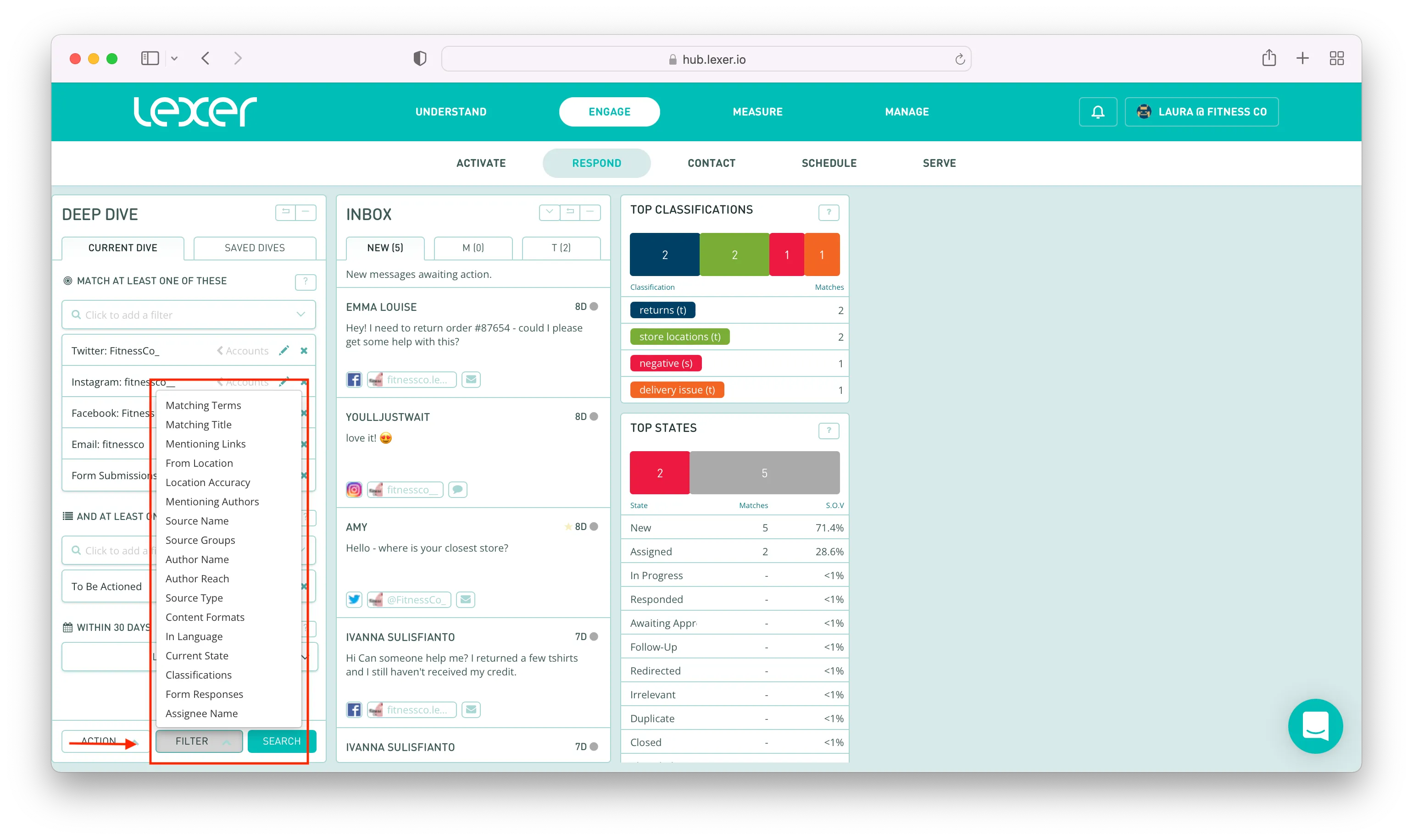Inbox filtering
Learn how to filter your inbox results in Respond
The Respond inbox is a vital tool that helps you to proactively engage with the customers who are reaching out to your brand.
This article will show you how to navigate the inbox filters so you can create specialized searches for building new workflows for faster and more relevant engagement.
The Deep Dive
The Deep Dive is a tool that helps you filter and navigate unpredictable content within your Respond inbox.
It uses "tier-based" search logic to perform a dynamic range of unique searches for even the most specific needs. Every search can then be saved and used later. See your “Saved Dives” for a list of saved searches.
Using the Deep Dive you can use customized search filters to find anything within a selected time range, and you can go even deeper by adding more filters for granular searches.

Search using customized filters
Deep Dive searches work by combining two tiers of filters with a date range.
We refer to the tiered filters as Tier 1 and Tier 2. Tier filters are essential to your search as they communicate the logic “search this, for that” (Search Tier 1, for Tier 2).
Tier 1
Tier 1 is the name given to the section of the Deep Dive that reads “Match at least one of these”. Here you can select any number of Tier 1 filters to apply to your search. Adding multiple Tier 1 filters increases the range of content to search from, as it builds an “any of these” relationship between each Tier 1 filter selected.
As an example: adding a “Facebook” filter and a “Twitter” filter will show you results from either Facebook or Twitter.

When adding a Tier 1 filter you are asking the search to match at least one of the filters you have selected.
Tier 2
Tier 2 is the name given to the section of the Deep Dive that reads “And at least one of these”. Tier 2 is similar to Tier 1, where you can add any combination of Tier 2 filters to build an “any of these” relationship. However, Tier 2 is reactive to Tier 1. Your Tier 2 filter will search within the results from your Tier 1 filters.
Continuing with the previous example: Using Tier 1 filters “Twitter” and “Facebook”, now add a Tier 2 filter that searches for “New content” to show new content from Twitter or Facebook.

When adding a Tier 2 filter you are asking the search to match at least one of the filters you have selected, within the results from your Tier 1 filter/s.
Select a time range for your filtered search
The date picker controls the time range that your inbox covers. Changing this will alter your search to include or exclude content made at certain dates. You can search any range in the last 90 days of social content.

Creating new Tier 1 and 2 filters
If you navigate to Manage > Settings > Tier filters you will find the tools you need to inform and manage tier filters. Here you can create, remove, and edit your tier filters and update their access permissions.

- Select the type of filter you’d like to create
- Give your new tier filter a relevant name and category (something descriptive so that anyone selecting the filter will know what it's searching for)
- Select who in your team can access the filter
- Create any custom combination of filters
- Hit save

Some tips for maintaining tier filters are:
- Use descriptive names
- Provide a well-explained comment
- Only give the relevant team members access to use it
If the tier filter you're editing is no longer right for you, you can delete it by pressing the X under the "Tools" heading, in the tier filter table.

Dive deeper
You can add more filters to your search for more granular searches. We call these additional filters Tier 3 filters. They add on to your existing search by saying “In my search for Tier 2 objects, inside Tier 1, find me anything that matches Tier 3”. This will add deeper layers of search granularity.
Tier 3 filters can be added by selecting the “Filters” button at the bottom of your Deep Dive, and will give you the option to select from 17 unique types of filters.

Tier 3 filters
Here’s a list of all Tier 3 filters that can be applied to any search made using the Deep Dive.
How to search using Boolean language
When you open a fresh filter, it may present you with a blank field, expecting you to enter something manually. Every blank field search uses what we know as “Boolean language” to elaborately explore the mountains of data that we collect. Boolean language is the idea that you can combine simple searching keywords to come up with very elaborate searches, helping differentiate between “Cats and Dog”, “Cats or dogs”, and “Cats not dogs”.
These operations are:
First time searching?
Try using Boolean language in a “Matching Terms” filter to practice.
Begin by searching for a hashtag of your choice. An example: “#sunsoutgunsout”. Executing this search will now return any content that contains the words “#sunsoutgunsout”.
Once you’ve explored your results and have a good idea of how to further tackle the stream of content, try and find some specific content by adding an AND operator to your search. For example: “#sunsoutgunsout” AND “Going to the beach”. This will filter down your search even further, showing you results that are most relevant to the conversations you’d like to study.
Filler words such as “A”, “the”, “and”, and “it” are excluded from searches, and cannot be searched for on their own. Instead, try using related words, phrases, or hashtags to find what you’re looking for. For example, if you were searching for content around the movie “It”, you could search for a related hashtag, such as #itthemovie or #pennywise.
If you require a search that looks specifically for these terms/letters, please reach out to Lexer Support (support@lexer.io) for assistance.

